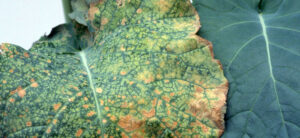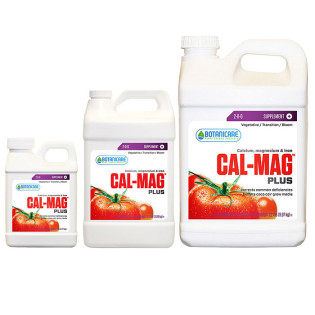
Boron is an essential micronutrient. Boron benefits include plant growth and development. It is required in very small amounts despite its importance. The effects of boron in the plant are not fully understood.
Boron is taken up through a plant’s root system, in both soil and hydroponic growing systems. It can also be absorbed through its leaves in foliar uses.
When a boron deficiency in plants is found, it becomes necessary to add boron supplements.
What Does Boron Do For Plants?
Boron is a micronutrient that is vital for good plant health. When it is not present, this can lead to big problems with growth.
It’s unique from other nutrients in that you won’t notice any chlorosis (leaf yellowing) when there is a deficiency. However, symptoms of its toxicity are similar to those of other nutrients.
Boron is typically used with calcium, for the process of cell wall synthesis. It is also needed to create new plant cells in a process known as cell division.
It is needed for reproduction, aiding the plant with seed and fruit development, pollination, and more. Boron's list of uses doesn’t end there, though.
It's also needed to help the plant transport carbs and sugars, to metabolize nitrogen, and to form various proteins.
It can work to regulate hormones and move potassium to the stomata of the plant.
While this last function doesn’t sound that important, it is. When a plant is unable to move potassium it can have trouble keeping up the balance of water in its cells.
This can ultimately cause it to weaken and die. Not only that, but boron is necessary for the movement of sugars. Without boron, there will be fewer sugars and exudates in plant roots.
This can make it hard for mycorrhizal fungi to colonize the roots. This is something that is often overlooked but very important for healthy plant growth.
What Is A Good Source Of Boron For Plants?
You can treat a boron deficiency by using a complete micronutrient fertilizer. This is the preferred method of treating a deficiency.
That’s because soil and growing solutions that are deficient in boron are usually also lacking in other micronutrients as well.
However, you can also use a boron supplement. You will need to be extremely careful when doing this, though, as it’s easy to over-apply a boron supplement.
Some options include boric acid and borax. Most people use a small amount (½ teaspoon per gallon of water) of boric acid as a foliar spray. Just be careful, as too much boron can also be a problem.
There are certain plants that are more prone to boron deficiency than others, too, including salvias, petunias, impatiens, and pansies.
You may want to avoid these plants if boron deficiency is a consistent problem for you.
There are other plants that aren’t prone to deficiencies, but are heavy boron users. Some types are crops like cabbages, pears, grapes, apples, Brussels sprouts, broccoli, cauliflower, and turnips. You may want to use a light boron spray as an annual prophylactic measure.
Boron Deficiency
Boron deficiencies are very rare and often come with calcium deficiency. They occur most often when plants are under-watered.
It also has a positive impact on root uptake of potassium and phosphorus, two vital macronutrients for our plants. Boron plays a big role in maintaining proper functioning and strength of plant cell walls.
Boron deficiency will still allow the plant to grow to a reasonable size, but in a weaker state. You will experience death at growing points, and flowers and buds will fail to develop.
Here are some additional symptoms you can watch for to help you identify a boron deficiency in plants.
Identifying Boron Deficiency In Plants
Leaf symptoms of boron deficiency will appear in the upper, young leaves. Slight yellowing may occur, and the tips of leaves will turn brown to black and die off.
The stems may also be affected by becoming brittle, displaying cracks along the surface of the stem, or becoming hollow.
- Young leaves will experience tip burn
- Young leaves will curl and wrinkle
- Growing tips die
- Root tips will swell and stop growing
Examples Of Boron Deficiency On Leaves

Crop Specific Symptoms Of Boron Deficiency
- Apples—interacting with calcium, may display as "water core", internal areas appearing frozen
- Beetroot—rough, cankered patches on roots, internal brown rot.
- Cabbage—distorted leaves, hollow areas in stems.
- Cauliflower—poor development of curds, and brown patches. Stems, leafstalks and midribs roughened.
- Celery—leaf stalks develop cracks on the upper surface, inner tissue is reddish brown.
- Celeriac—causes brown heart rot
- Pears—new shoots die back in spring, fruits develop hard brown flecks in the skin.
- Strawberries—Stunted growth, foliage small, yellow and puckered at tips. Fruits are small and pale.
- Rutabagas / Turnips—brown or gray concentric rings develop inside the roots.
- Palm Trees—brown spots on fronds & lower productivity.
How To Correct Boron Deficiency
One of the first things to take a look at is pH balance, in both soil and hydroponic growing systems. A pH imbalance will block nutrient uptake through the plant’s roots.
It is important to regularly check the pH. Be sure to keep the pH within the appropriate range for soil or hydroponics. The optimal pH range for most plants is between 5.5 and 6.5. Make sure you don’t have a high pH or too low.
In this range the nutrients present in the soil or water are soluble. They are easily taken up through the plant’s root system.
When the pH level is outside of this range they are not able to reach the plant. Even when appropriate levels of micro and macronutrients are present.
Alternative Methods For Fixing Boron Deficiencies
Another great approach to fixing a boron deficiency is through adding supplements. A nutrient supplement that contains kelp will give plants a much needed boost of boron. It will also give the added benefit of calcium and magnesium.
Another method a lot of gardeners and growers like to apply is with the use of borax or boric acid. This simple method can be used in soils, soilless growing, hydroponic systems, and as a foliar spray.
Caution: The leaves of many types of plants are damaged by the application of boron. It is best to apply it to the soil or hydroponic solution.
Household borax should be applied at a rate of ½ tsp. of borax with 1 gallon water. If you suspect a boron deficiency problem with your plants, a dose of borax will do the job.
Boron can quickly become toxic if applied in excess. Keep concentrations below 20 ppm under normal growing conditions for optimal results. Boron is sometimes a component of insecticide so it is best to avoid excessive amounts of boric acid-based products.
Now you know the benefits of checking the boron content in your soil. Also hydroponic growing systems and what to do when you spot a deficiency. You can be sure to have the right tools on hand to keep your plants at their best.
Boron Toxicity In Plants
The signs of boron toxicity are quite similar to those of other nutrients. Sometimes a few older leaves of the plant will begin to show a slight tip chlorosis. This is more common with other nutrient deficiencies than it is with boron.
Boron toxicity often sets in quickly, leading to the full death of a leaf toeven all of the foliage. It will rapidly affect lower leaves, too. Toxicity is much more common during dry seasons or when you apply too much compost to the soil.
It is hard to avoid the toxicity of boron when you are treating a deficiency. The line between “too much” and “too little” is razor thin. It is often easier to prevent toxicity by checking the growing medium’s pH. You should also check the water’s pH and your nutrient levels.
Boron toxicity is more likely to occur if the growing medium has a pH lower than 5.5-6.0. It also happens if there has been too much boron applied with fertilizer.
It isn’t likely to occur on its own or due to natural causes. If your plants get boron toxicity make sure to leach the solution. Then make sure to flush out any extra boron. Be sure to conduct a full soil test to make sure this is the culprit and not something else.
Apply a fertilizer that has calcium after your flush. Calcium will render boron unusable by your plants.
When irrigating your plants, test the water first. Many irrigation water sources contain plenty of boron (0.3 to 0.5 ppm). You don’t need to supply extra boron with fertilizer.
If you need to boost other nutrients, use a boron-free fertilizer to prevent toxicity.
Final Thoughts On Boron For Plants
To keep things simple, grab a complete nutrient package. If you follow your feeding chart properly you likely won't ever have to deal with a boron deficiency.
This is a vital nutrient. Even if you don’t hear about it as much as some other micronutrients in gardening.Nevertheless, your plants need boron. So make sure to feed properly, and watch for symptoms of deficiency or toxicity! Read our entire nutrient deficiency series as well to learn about other vital plant nutrients.






















